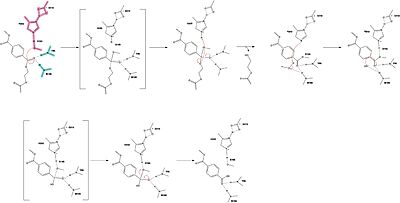User:Anjali Rabindran/Sandbox 1
From Proteopedia
(Difference between revisions)
| Line 5: | Line 5: | ||
<Structure load='4eb0' size='350' frame='true' align='right' caption='Insert caption here' scene='10/1075190/Wild_type_pet_hydrolase/3' /> | <Structure load='4eb0' size='350' frame='true' align='right' caption='Insert caption here' scene='10/1075190/Wild_type_pet_hydrolase/3' /> | ||
| - | Researchers have been investigating various mutations of PET hydrolase to enhance is catalytic ability. One group of researchers, Tournier et. al., have made mutations in the PET hydrolase active site. They identified the key residues involved in the catalytic mechanism by using a model of the PET substrate onto the enzyme. The site, mainly a hydrophobic pocket, contained 11 residues targeted for mutagenesis. From this, they identified that the majority of enzymes specific activity went down, however, the mutation of the F243 to either isoleucine or tryptophan actually increased specific activity. | + | Researchers have been investigating various mutations of PET hydrolase to enhance is catalytic ability. One group of researchers, Tournier et. al., have made mutations in the PET hydrolase active site. They identified the key residues involved in the catalytic mechanism by using a model of the <scene name='10/1075190/Ligand/1'>PET substrate</scene> onto the enzyme. The site, mainly a hydrophobic pocket, contained 11 residues targeted for mutagenesis. From this, they identified that the majority of enzymes specific activity went down, however, the mutation of the F243 to either isoleucine or tryptophan actually increased specific activity. |
<scene name='10/1075190/F243_wt/2'>WT F243 Residue</scene> | <scene name='10/1075190/F243_wt/2'>WT F243 Residue</scene> | ||
Revision as of 14:29, 1 April 2025
Contents |
PET Hydrolase!!!!!😁😁😁😊😊😊😊😊
Structure
|
Researchers have been investigating various mutations of PET hydrolase to enhance is catalytic ability. One group of researchers, Tournier et. al., have made mutations in the PET hydrolase active site. They identified the key residues involved in the catalytic mechanism by using a model of the onto the enzyme. The site, mainly a hydrophobic pocket, contained 11 residues targeted for mutagenesis. From this, they identified that the majority of enzymes specific activity went down, however, the mutation of the F243 to either isoleucine or tryptophan actually increased specific activity.
Function
Disease
Relevance
Mechanism
</StructureSection>

